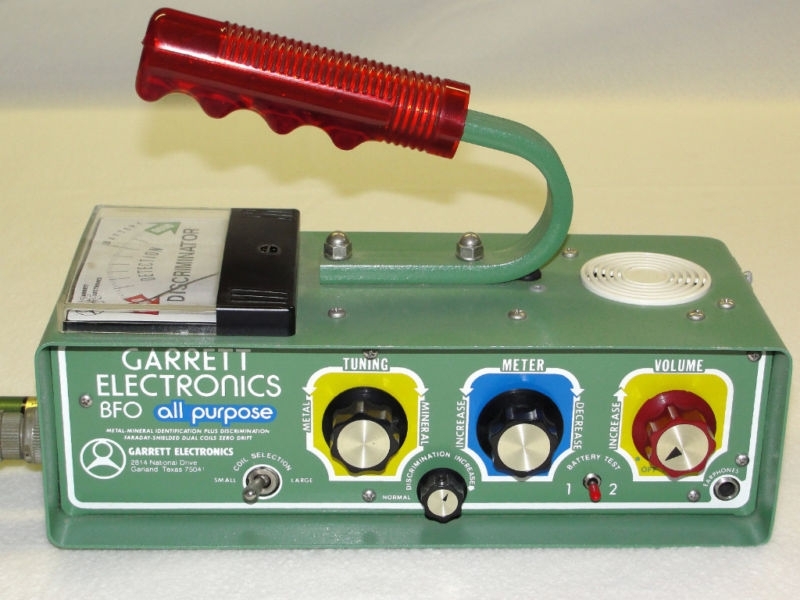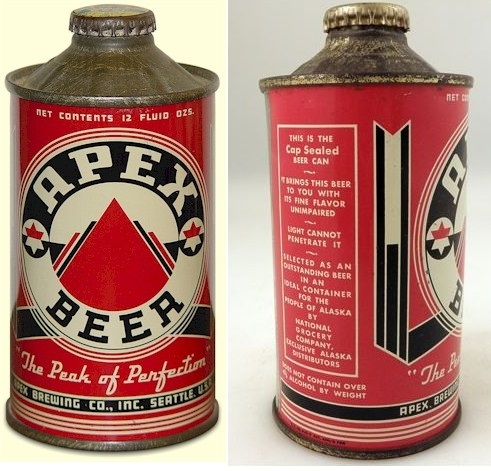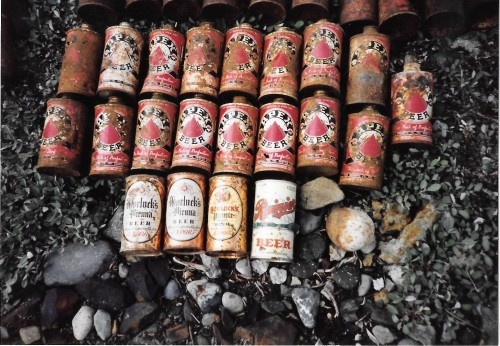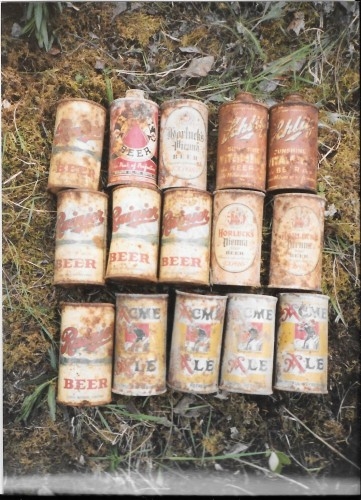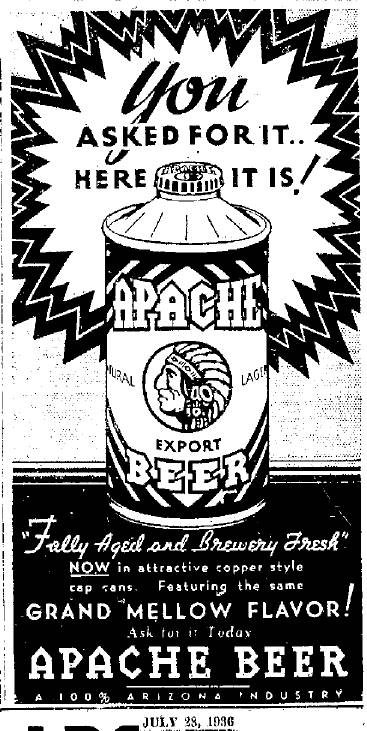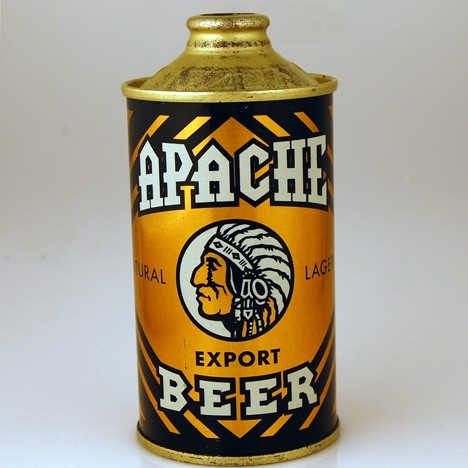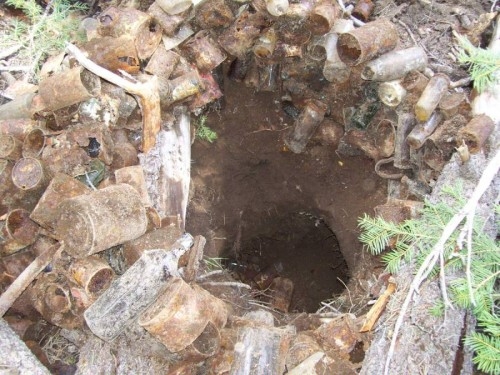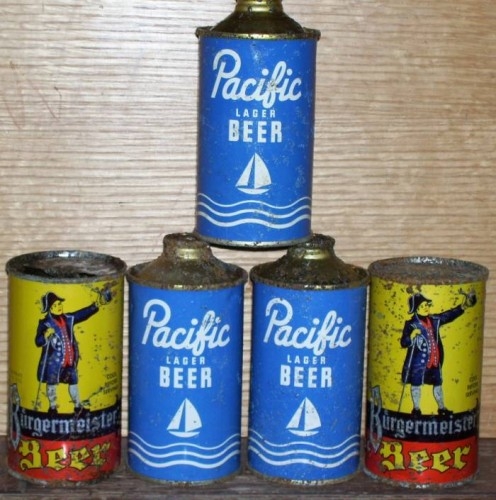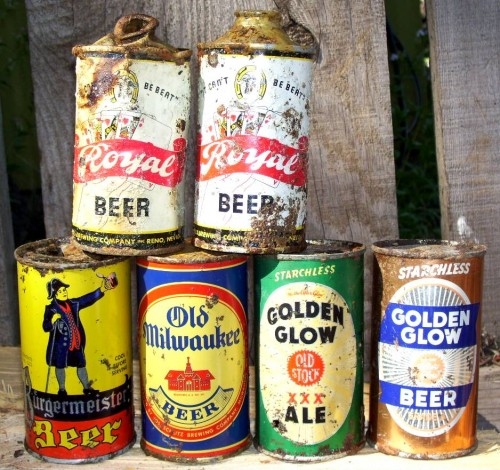-
Posts
27 -
Joined
-
Last visited
Content Type
Forums
Detector Prospector Home
Detector Database
Downloads
Everything posted by FeO2digger
-
Garrett ATX And Recon Coil Options
FeO2digger replied to FeO2digger's topic in Garrett Metal Detectors
Thanks guys! -
I own both a Garrett Recon and an ATX, can someone remind me what was found to be best 10 x14 Infinium coil to be used on each? I was thinking someone found the Infinium 10 x 14 mono coil was best for Recon and Infinium 10 x 14 DD coil best for use on the ATX Is this correct or are all interchangable?
-
True All Metal No Motion Mode
FeO2digger replied to FeO2digger's topic in Metal Detector Advice & Comparisons
The Rutus Alter 71 manual says this about Non Motion All Metal mode 1. Motion channel with object identification and Discrimination 2. All metal channel with adjustable operation speed Signals processed in both channels are directed to the sound control circuit. The Motion channel with object identification and Discrimination ensures the objects are properly identified. The identification result is directed to the display independently of the sound control circuit, but the sound signal is directed to the sound control circuit only when it is allowed by the Discrimination, Notch or Masking settings. The Motion channel – as its name suggests – requires that the search coil be moved relatively to the object. The All metal channel reacts to all metal objects or, depending on the soil category (using data from ground balance) and SAT setting, can react to magnetic objects under certain conditions (so called hot rocks, ceramics, bricks etc. and objects other than the soil). The All metal channel can be completely non-motion (SAT = 0) or it may require the movement of the search coil as the SAT parameter is increased. When SAT is set to 20, the All metal channel works as a „single-filter” Motion channel – where movement is required. I like the ability to set search frequency very low, and with adjustable SAT is set to 0 a true unfiltered Non Motion static mode? -
True All Metal No Motion Mode
FeO2digger replied to FeO2digger's topic in Metal Detector Advice & Comparisons
As always Steve, thank you for your very easy to understand summations of subjects, I can glean information across all boards but get easily confused as everyone uses like terms but dont always apply them in correct context. I bought and tested 5 different platforms recently and moved on from all but the TDI SL PI unit. Am still looking to upgrade the VLF original Gold Bug platform with a detector that operates in the mode as described above. The next units I plan on trying are the Tesoro Outlaw, Nokta Impact, and now going to look at the F75 (with boost and DST?) From reading the manuals I know that both the Impact and Outlaw have a dedicated true Non Motion All Metal mode unfiltered channel, and the Outlaw actually has a retune button to deal with drift just as the M Scope Gold Bug did. I believe the Detech Chaser 4.8 khz model may also have capability but is not available in US yet and havent found the manual for this model. -
True All Metal No Motion Mode
FeO2digger replied to FeO2digger's topic in Metal Detector Advice & Comparisons
Here is an old discussion from another board on the SST that gets into the subject http://www.dankowskidetectors.com/discussions/read.php?2,44115,44514 I see you chimed in on subject Steve. What I dont understand is other posters commented "There's no way for a machine to give variable audio tones in True all metal NON motion" This statement confuses me because my experience with the original Gold Bug run in No Motion mode it certainly had great VCO tones -
True All Metal No Motion Mode
FeO2digger replied to FeO2digger's topic in Metal Detector Advice & Comparisons
As from learned elsewhere in forums there is a difference in true Non Motion All Metal and All Metal running through DISC set to zero. The Original Gold Bug 19 khz had no DISC and ran in a dedicated No Motion mode with VCO Some of the detectors are fuzzy as to how the All Metal mode is truly filtered as a stand alone mode or through DISC set to zero. am I correct on this Steve? From what I understand true ALL METAL is always static or Non Motion, but few current platforms run a dedicated mode for this as it is not user friendly with drift problems. Most channel through a filtered Disc mode. -
True All Metal No Motion Mode
FeO2digger replied to FeO2digger's topic in Metal Detector Advice & Comparisons
Reading the manual for the Fisher Gold Bug and Gold Bug Pro it says: The All Metal Mode is more sensitive than the Discrimination Mode, and is used to find all types of metal objects in the ground. The searchcoil must be in motion for objects to be detected. From what I understand the only Non Motion Static mode is attained but holding the Pinpoint button Pinpoint is a mode of detection which does not require the searchcoil to be in motion. A motionless searchcoil held over a metal object will induce a hum; volume and pitch of the hum increase with target strength. I am looking for options that run in a true all metal static or non motion full time mode with VCO, most units do not seem to have a dedicated Non Motion / Static All Metal mode because of difficulty for user with drift of signal. Most incorporate a type of pinpoint trigger or button to temp switch into mode. -
True All Metal No Motion Mode
FeO2digger replied to FeO2digger's topic in Metal Detector Advice & Comparisons
Thanks Mark,will take a better look at the F75, the term STATIC confused me at first, but this I see is just another way of saying it has a Non Motion all metal mode. Does boost mode variations make a difference while running in Static All Metal? Also is the 15 inch DD coil through Fisher for this unit worthy or better to add a large format NEL or Detech? Is the Technetics T2 same platform as Fisher F75? -
Can you guys help me to compile a list of all current VLF detectors on the market that will run in a true ALL METAL no/non motion setting as a user defined base mode, not a hold trigger or pinpoint button held type option but a base mode of operation. Much like what the original M Scope Fisher Gold Bug 19 khz unit operated as. I am seeking a VLF unit with least amount of or no discrimination that operates in all metal no motion, ability to turn up gain and sens as well as GB preferred and has ability to add large format aftermarket coil. I believe that the Tesoro Outlaw has all metal no motion mode.
-
Does Anyone Still Make BFO Detectors
FeO2digger replied to FeO2digger's topic in Metal Detector Advice & Comparisons
Impressive collection Carl! being a collector at heart I have thought about collecting those vintage units myself, have even owned a few back in 70s shown there. Thinking about it my very first detector was a brown Bounty Hunter Pro model and had a mineral/ metal tuning knob on it, so it was likely a BFO unit and it really was challenged for depth with is smaller coil. Though being a novice Im sure user error played a big part in my lack of success too! From reading Carl's Geotech site there are likely better projects for me to focus on than BFO for deep metal cache detection. The magnetometer section and induction balance 2 box info and projects are very interesting and enlightening! -
Does Anyone Still Make BFO Detectors
FeO2digger replied to FeO2digger's topic in Metal Detector Advice & Comparisons
I get that BFO tech is a dinosaur in most of today's THers eyes... but like a two box or double coil T/R system it seemed to be very useful in finding deeply buried caches of ferrous materials. Really not a system that would interest most searching for other targets. From what I witnessed a unit like shown below that he had modified some and using a large 2 foot search coil he was very productive in finding caches of cans and bottles in privies up to 4 foot or better (large concentrations of rusting metal) which he said was producing a huge halo effect around the target. I was using a 2 box system and a new PI unit and doing ok, but what most struck me was the other user's ability to only get readings on the larger deep targets in areas heavily infested with smaller metal and lots of surface debris he was able to work through and just find the deep pits with his system. Though I am sure much of his ability was user based on experience and knowledge of his reading signals as much as the actual hardware. Thanks for further info Steve. I think I will work on building a BFO platform off an vintage unit and homemade coil and see if I can get any results. found some info here too on such... http://www.hobby-hour.com/electronics/s/bfo-metal-detector.php On another note, I did see several forums where guys were still using such BFO units to find deposits of black sands not detectable with other detection modes. -
On subject of coils and systems... I was out working some areas for relics with a couple others and one guy was killing it with an very vintage 70s Garrett Master Hunter BFO unit with a large home made looking square coil of pvc looking material. After looking into I found that BFO is Beat Frequency Oscillator and was popular before T/R VLF format machines. BFO was not good for small coin shooting and nugget hunting and lacked ability for quality discrimination from what I read but excelled in depth ability, especially on large ferrous cache targets as well as finding mineral deposits like drifts of black sands or veins of ore. So are there currently any units that still use a BFO mode or format? I can find vintage BFO type units available very reasonably priced, is there any information out there on how to bring them up to current on a battery system and build large coils suitable for this type of cache detecting?
-
Old Maps Online
FeO2digger replied to Steve Herschbach's topic in Metal Detecting For Coins & Relics
May have likely been mentioned before but another great source for maps is the USGS topo collection, with scans of maps back to 1884. All are downloadable free or you can purchase paper copies from store online. Leaning the navigation of site takes a bit of reading but is a great resource for huge amount of data. see https://nationalmap.gov/ustopo/ and https://nationalmap.gov/historical/ *** upon further review of Steve's post it seems the oldmaps site draws information from the USGS site with an easier nav formula. http://www.historicmapworks.com/ -
New Detech Chaser Metal Detector
FeO2digger replied to argyle's topic in Metal Detector Advice & Comparisons
In the pic above it shows a 4.8 khz Chaser unit , had heard some good things about Detech Striker unit shown earlier in this thread, is this new freq digital Chaser unit at 4.8 a upgraded relic unit to replace Striker and is there any further info on this one? -
I recently added a PI unit to my weapons hoping to get further depth on caches of buried cans and bottles at 3 feet and deeper. I am mostly using the detector only to find the deeply buried pits of ferrous cans/ "trash". I know there is a learning curve to all new equipment but am throwing out some questions here for those who have used the White's SPP. First thing I notice is the detector is very sensitive especially to shallow scatter like concentrations of scattered nails and wire, especially wire in coils or even hangers bent in round loops sound like a much better target. I have read that adding a much larger coil like an SEF style in 20x17 format will eliminate some of the "noise" of semi surface items as well as add a bit of depth. My question is having the SPP without the Pulse Delay setting am I going to have a problem running these coils? I had read elsewhere that guys turn up the Delay setting when using the larger coil and the SPP does not have this ability. My first time out experimenting on finding a large deep target of cans I knew existed I ran the coil that came with the unit and in range on controls suggested in thres and gain. I picked up a number of small sharp high tone signals and dug them just for experience. I came up with bottle caps, loose change, a 2 dollar Mexican coin and a nice men's gold band. But these are not the type of targets I seek and would rather hear the deeper low tones that suggest concentrations of deeper buried metallic objects (trash). I was able to easily find the pit of old cans that were about 3 1/2 feet down but noticed it was very hard to pinpoint the signal and it seemed to overload or max out the detector signal. When switching to OFF on GB and running in an non motion mode I did well but experienced the same overload type effect on deep concentration target. When I turned the GAIN down some it helped with average targets of say 6 pack of cans at 2 foot, but I lost the ability to pick up the deep target. I know I am looking to use machine in ways most are trying to avoid in digging "trash" but just looking for any suggestions on coils and settings that may help with my learning curve. THANKS!
-
Digging Arizona For Beer Cans
FeO2digger replied to FeO2digger's topic in Metal Detecting For Coins & Relics
Very much agreed, you are responsible to know the laws of the lands you hunt, Federal Land is restricted for digging of most artifacts. Good research for finding private lands that owner gives consent is best choice, but getting tougher to make those connections all the time. Though not discussed above, most of these targets being dug are old 1930's privy or outhouse holes, and in many cases are not in rural areas as much as populated areas with residential homes or even new structures on property. Most landowners are unaware they even have this stuff buried in their yards, but with research, doing your homework can be difference of success or coming home empty. -
Digging Arizona For Beer Cans
FeO2digger replied to FeO2digger's topic in Metal Detecting For Coins & Relics
Thanks guys! and very cool story Steve on cans underwater in Alaska! I have seen recovery of them from diving and some are remarkable if buried in the muck as you state. Really the final frontier in the type of quests I pursue. Speaking of Alaska, a number of years ago I did my research and put together several solid leads on digging sites with permissions from owners. I flew up and spent a week following up. The main quest was to dig a very rare Apex Beer cone top beer can from Seattle WA that stated it was made for sale only in Alaska in 1937. Very few examples existed at the time mostly because no one was detecting in Alaska for these. Shown Below mint example recently sold for 23,000 dollars as seen here https://breweriana.com/beer-cans-cone-tops/apex-beer-150-19-19621/. Though I didn't find really clean examples of the Apex Beer I did find a number of very displayable ones which were very salable. As well I found a Horluck's Vienna Beer Can from 1937 which at the time was the best example known and is now one of just several known in good condition. The Horlucks can alone paid for my entire trip several times over and now is valued at 5-10k as seen here (my actual can) http://www.ebeercans.com/Horlucks-Vienna-Style-Export/177/ The entire haul from Alaska trip was about 600 cans recovered and will go down as one of my most successful quests! Couple pics below of just a small part of what was recovered on trip shows just how clean the preservation was on cans fresh out of ground, not even washed off yet. They will be cleaned with oxalic acid and much of the surface light rust will come off. Treasure can come in many forms, the cans are trash to many but is a niche in hunting and detecting I have mastered and has been very productive over 40 years of chasing. -
Getting ready to plan a trip near Yuma Az area digging "trash"... I have a target in mind I would like to find... The quest is to find some Apache Beer cone tops buried in trash pits in desert sands. From knowledge of others digs condition of 1930s cans has shown good promise and recovery of quality specimens of other brands has been promising. I am drawn to Yuma Arizona area because in researching old newspaper ads I found this was one of just several cities they marketed Apache Beer for 6 months in 1936. Below is a newspaper ad from 1936 and a very clean example of the Apache Beer cone top which recently sold for 28,000.00 and you can see here in link http://breweriana.com/beer-cans-cone-tops/apache-export-beer-cone-2881/ Not a typo! those old cans actually sell for insane values. My reason for posting this is to bring attention to just how rare some of this trash is to collectors and also to get some opinions or intel from anyone who might suggest areas I may find open to digging around the Yuma area. As well, has anyone else dug old beer cans and kept them or left them behind in the past?
-
Official Nokta Impact Announcement
FeO2digger replied to Steve Herschbach's topic in Nokta / Makro Metal Detectors
In VLF machines I was considering the Nokta Fors Relic with large 15" coil or Detech Relic Striker with large 18" coil. I am strictly using machine to find deeper caches of buried metal. What most would consider trash. Would the Impact be a relevant new platform to consider with the 15" coil for locating the type of items I seek at depths? Average target would be comparable to burying a metal trash can lid at 4 to 5 feet depth. Thanks!



